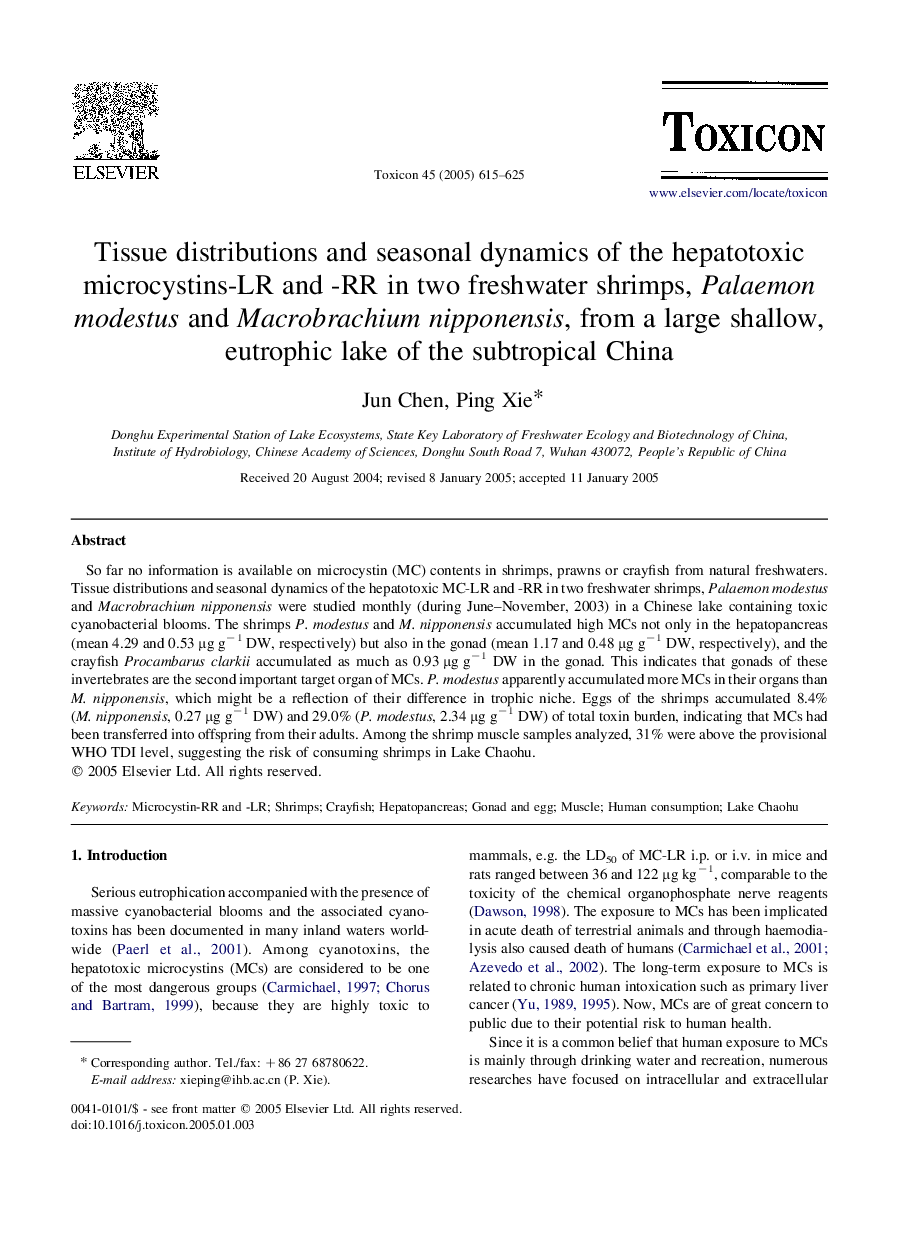| Article ID | Journal | Published Year | Pages | File Type |
|---|---|---|---|---|
| 10880257 | Toxicon | 2005 | 11 Pages |
Abstract
So far no information is available on microcystin (MC) contents in shrimps, prawns or crayfish from natural freshwaters. Tissue distributions and seasonal dynamics of the hepatotoxic MC-LR and -RR in two freshwater shrimps, Palaemon modestus and Macrobrachium nipponensis were studied monthly (during June-November, 2003) in a Chinese lake containing toxic cyanobacterial blooms. The shrimps P. modestus and M. nipponensis accumulated high MCs not only in the hepatopancreas (mean 4.29 and 0.53 μg gâ1 DW, respectively) but also in the gonad (mean 1.17 and 0.48 μg gâ1 DW, respectively), and the crayfish Procambarus clarkii accumulated as much as 0.93 μg gâ1 DW in the gonad. This indicates that gonads of these invertebrates are the second important target organ of MCs. P. modestus apparently accumulated more MCs in their organs than M. nipponensis, which might be a reflection of their difference in trophic niche. Eggs of the shrimps accumulated 8.4% (M. nipponensis, 0.27 μg gâ1 DW) and 29.0% (P. modestus, 2.34 μg gâ1 DW) of total toxin burden, indicating that MCs had been transferred into offspring from their adults. Among the shrimp muscle samples analyzed, 31% were above the provisional WHO TDI level, suggesting the risk of consuming shrimps in Lake Chaohu.
Related Topics
Life Sciences
Biochemistry, Genetics and Molecular Biology
Biochemistry, Genetics and Molecular Biology (General)
Authors
Jun Chen, Ping Xie,
